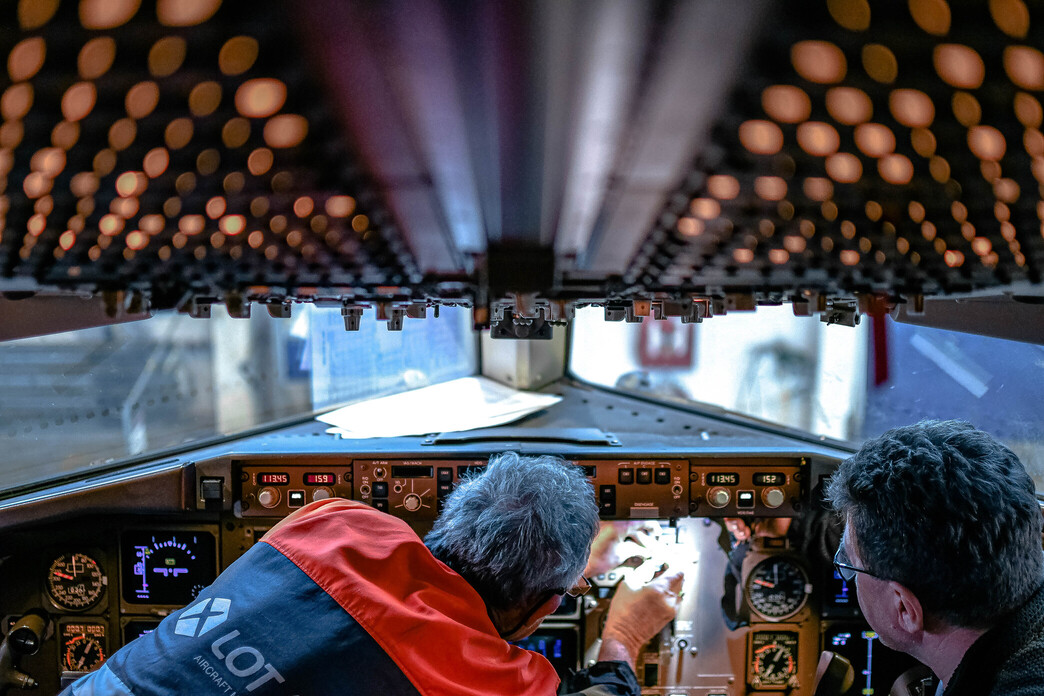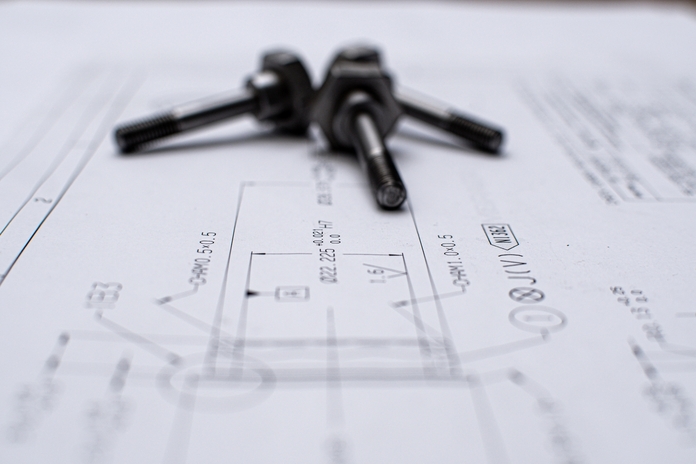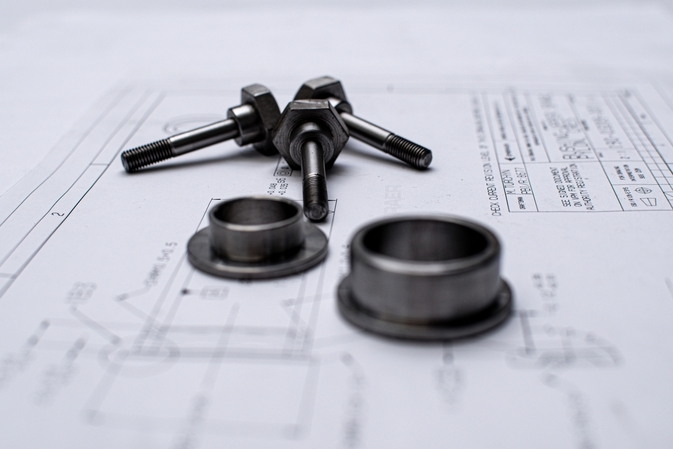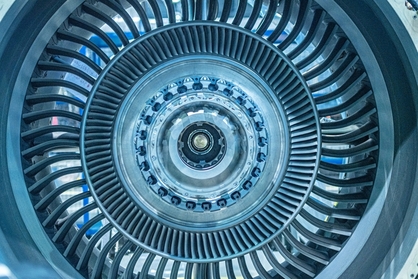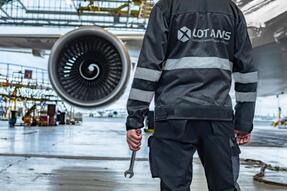MODULE 15 – GAS TURBINE ENGINE – exam only
Delivery methods: classroom only
Group Size: limited up to 3 [PL] + 4 [EN] students
Language: polish
Taking the Exam
Exams will be held starting at 11:00 AM in the Zephirius building (4th floor) at GTC or on the LOTAMS premises.
In the examination room, aside from your identification, a pen, and tests on the desks, nothing else can be placed.
After completing the exam, the filled-out test must be submitted to the examiner.
End of Examination
Upon completion of the exam, candidates are obligated to vacate their stations in the examination room and the training infrastructure as quickly as possible.
Information regarding the exam results will be provided either by phone or email after verifying identification details
Duration of exam:
Category B1: 92 multi-choice and 0 essay questions.
Time allowed: 115 minutes
Content:
15.1 Fundamentals
- Potential energy, kinetic energy, Newton's laws of motion, Brayton cycle;
- The relationship between force, work, power, energy, velocity, acceleration;
- Constructional arrangement and operation of turbojet, turbofan, turboshaft, turboprop.
15.2 Engine Performance
- Gross thrust, net thrust, choked nozzle thrust, thrust distribution, resultant thrust, thrust horsepower, equivalent shaft horsepower, specific fuel consumption;
- Engine efficiencies;
- By-pass ratio and engine pressure ratio;
- Pressure, temperature and velocity of the gas flow;
- Engine ratings, static thrust, influence of speed, altitude and hot climate, flat rating, limitations.
15.3 Inlet
- Compressor inlet ducts
- Effects of various inlet configurations;
- Ice protection.
15.4 Compressors
- Axial and centrifugal types;
- Constructional features and operating principles and applications;
- Fan balancing;
- Operation:
- Causes and effects of compressor stall and surge;
- Methods of air flow control: bleed valves, variable inlet guide vanes, variable stator vanes, rotating stator blades;
- Compressor ratio.
15.5 Combustion Section
- Constructional features and principles of operation.
15.6 Turbine Section
- Operation and characteristics of different turbine blade types;
- Blade to disk attachment;
- Nozzle guide vanes;
- Causes and effects of turbine blade stress and creep.
15.7 Exhaust
- Constructional features and principles of operation;
- Convergent, divergent and variable area nozzles;
- Engine noise reduction;
- Thrust reversers.
15.8 Bearings and Seals
- Constructional features and principles of operation.
15.9 Lubricants and Fuels
- Properties and specifications;
- Fuel additives;
- Safety precautions.
15.10 Lubrication Systems
- System operation/lay-out and components.
15.11 Fuel Systems
- Operation of engine control and fuel metering systems including electronic engine control (FADEC);
- Systems lay-out and components.
15.12 Air Systems
- Operation of engine air distribution and anti-ice control systems, including internal cooling, sealing and external air services.
15.13 Starting and Ignition Systems
- Operation of engine start systems and components;
- Ignition systems and components;
- Maintenance safety requirements.
15.14 Engine Indication Systems
- Exhaust Gas Temperature/Interstage Turbine Temperature;
- Engine Thrust Indication: Engine Pressure Ratio, engine turbine discharge pressure or jet pipe pressure systems;
- Oil pressure and temperature;
- Fuel pressure and flow;
- Engine speed;
- Vibration measurement and indication;
- Torque;
15.15 Power Augmentation Systems
- Operation and applications;
- Water injection, water methanol;
- Afterburner systems.
15.16 Turbo-prop Engines
- Gas coupled/free turbine and gear coupled turbines;
- Reduction gears;
- Integrated engine and propeller controls;
- Overspeed safety devices.
15.17 Turbo-shaft Engines
- Arrangements, drive systems, reduction gearing, couplings, control systems.
15.18 Auxiliary Power Units (APUs)
- Purpose, operation, protective systems.
15.19 Powerplant Installation
- Configuration of firewalls, cowlings, acoustic panels, engine mounts, anti-vibration mounts, hoses, pipes, feeders, connectors, wiring looms, control cables and rods, lifting points and drains.
15.20 Fire Protection Systems
- Operation of detection and extinguishing systems.
15.21 Engine Monitoring and Ground Operation
- Procedures for starting and ground run-up;
- Interpretation of engine power output and parameters;
- Trend (including oil analysis, vibration and boroscope) monitoring;
- Inspection of engine and components to criteria, tolerances and data specified by engine manufacturer;
- Compressor washing/cleaning;
- Foreign Object Damage.
15.22 Engine Storage and Preservation
- Preservation and depreservation for the engine and accessories/systems.
Who should attend:
- Technical personnel in aircraft maintenance or engineering.
Standard:
- EASA Part 66 (APPENDIX TO ANNEX III) / EASA Part 147
Prerequisites:
- A background in commercial aviation together with a general awareness of the regulatory
is an advantage.
Exam completion Standard:
- Exam pass mark: minimum 75%.
- Exam type: multiple-choice questions.
Certification:
- Certificate of recognition.
Additional information
| Date picker | 2025.01.28 B1, 2025.02.18 B1, 2025.03.20 B1, 2025.04.15 B1, 2025.06.10 B1, 2025.07.17 B1, 2025.08.05 B1, 2025.09.16 B1, 2025.10.07 B1, 2025.11.06 B1 |
|---|---|
| Course language | EN, PL |
